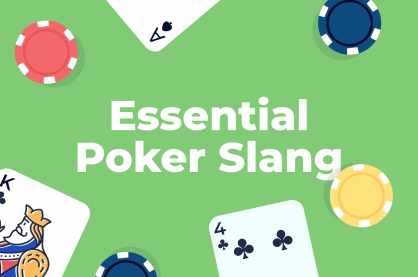R. Paul Wilson On: The Mysterious Case Of “The Flipper”

How many bets or important decisions have been determined by the toss of a coin?
From sporting events to all-or-nothing gambles, the ability to predict or control the outcome of such a simple thing as flipping a coin can be a powerful advantage.
Controlling A Coin Toss
Controlling how a coin will land is not always as difficult as you might think.
The “wobble” (as I was taught it) is a simple idea that only requires a thousand hours of practice and is usually performed with a larger coin to aid the illusion of it spinning in midair when it is, in fact, merely oscillating without turning over.
The method is to spin the coin horizontally and give it a little kick with thumb as the coin is tossed upwards, so it rotates and wobbles without flipping.
The knack is to give it enough of a kick to create this pronounced wobble while throwing it straight upwards to emulate the well-known action of flipping a coin legitimately.

I’ve used this in several scenarios to great effect from magic performances to Real Hustle scams and occasionally in real world situations to decide all manner of things.
It’s not the easiest move to master and it takes consistent practice to retain the skill but for a while I was obsessed, flipping thousands of times not just to get the wobble to work but to make the false flip look perfect!
Later, I learned another secret that made the turn of a coin seem much fairer and while it was not quite 100 percent accurate, the odds were so far in my favour that over time it has proven much more valuable and far more convincing than a perfect fake flip.
Gaffed Coins
While there’s a secret method to flipping a coin so it lands exactly on the side you need, there are other solutions that make it almost automatic in the correct conditions.
I have a friend who can let you spin a coin on the floor, then stamp on it with his foot and guarantee the outcome.
I also knew magician in Edinburgh who carried a double-headed coin and a double-tailed coin so he could flip and win no matter what side was called.
I remember watching him perform this feat and was amazed that no one noticed that for heads, he always flipped the coin from the left hand and for tails he always flipped from the right.
People assumed he only had one coin, but his secret was to have a coin in each hand, so he never even bothered to switch the coins!
Ricky Jay, in a quick item for Simon Drake’s excellent early 90s TV show The Secret Cabaret suggested an even smarter use of a double-headed coin where he would propose flipping a silver dollar to decide who paid for dinner and invite his companion to call it while the coin was still in the air.
If they called tails, the coin was sure to land heads up and the sucker would pay the cheque but if they called heads, Ricky would catch the coin and return it to his pocket, claiming it was just a joke to see if they would play along then proposed splitting the cheque as normal.
This was a simple swindle but an ingenious construction that might gain a sizeable advantage on the number of free meals a hustler might win in a year.

Other gaffs include coins that have had their edges expertly filed and re-milled so that when spun, they might land on a preferred side more often than not.
Professional hustlers can make these with simple tools, though I’ve seen poorly made examples in joke shops that are almost impossible to make land the other way!
But the best controlled flip did not use mechanical shoes, gaffed coins or even controlled tosses and yet, over time, many millions were won by the master coin flipper of all time.
Meet “The Flipper”
As a con man, “The Flipper” has succeeded in creating his own legend with almost no personal details being revealed and much of what I learned about him came from second or third-hand accounts.
Details of what he could do with a coin soon began to baffle me because it seemed impossible that anyone could control a coin under the circumstances being described.
The Flipper didn’t just toss a coin and slap it on the back of his hand; he span it high into the air then tossed it unseen under a cup or even an upended trash can.
Sometimes he allowed others to spin the coin – often borrowed and freely examinable at any point.
I was baffled by these stories because I assumed he simply had to be controlling the outcome, but this was not always the case (though I’m certain he was also a master of all the methods previously described).
In fact, a controlled flip would be a disadvantage for the Flipper’s purposes because when he tossed a coin, it was never to win a free lunch or a few dollars.
When the Flipper flipped a coin, thousands of dollars would ride on the outcome.
The Flipper’s Secret
So if the flip was fair, how did the Flipper cheat?
When a coin was tossed, the outcome was truly random but what happened to the coin after the flip is where the Flipper’s genius excelled.
No matter if coin landed heads-up or tails-up or whether he threw it a hundred yards away onto an empty field, ricocheting into a trash can or under his own foot – that coin never flipped again.
The Flipper’s process of trapping the coin in a seemingly fair manner so it couldn’t be controlled, allowed him (by sense of touch) to tell if the coin was heads up or tails up and then keep it that way while placing it into a seemingly fair position for people to then gamble on the outcome.
This meant that he alone knew for certain what the outcome was before any bets were made and since he would be the bookie for the bets that were taken, he had the ultimate advantage.
From that moment, he would take bets on heads and tails but make absolutely sure he took more losing bets than winning bets since he already knew the outcome.
The Flipper’s skill and showmanship gave him a powerful advantage and he would often have dozens of people betting on the toss of a coin, each winning and losing according to an obviously random and fair coin toss but thanks to already knowing the result and being able to retain that result in a theatrical and convincing manner, the Flipper was guaranteed to make money.
Shill Work
The Flipper also worked with shills who bet money on the winning side so the Flipper could encourage more bets from suckers on the other side of the coin.
An expert shill might bet on heads after receiving a signal on the Flipper then offer odds to anyone who would bet against him, so pushing all the suckers towards the losing option.
There are so many ways to manipulate a crowd once the outcome is certain that the Flipper probably made millions during his ‘career’ but what became of him is unknown and in a dozen years of asking and searching, I am yet to even learn his name.


